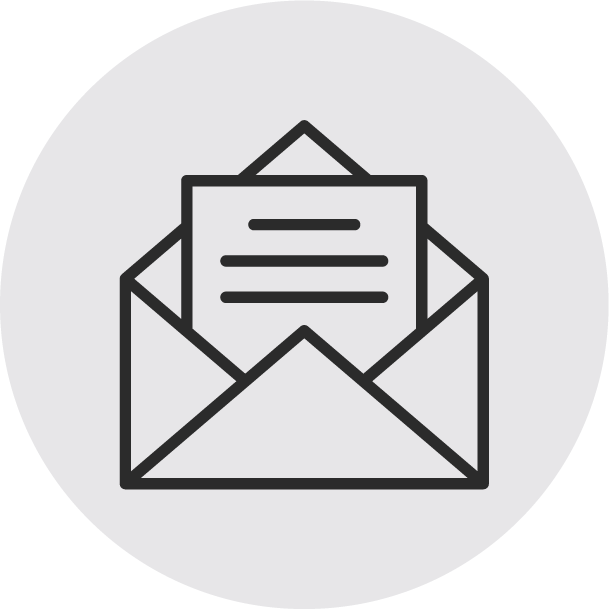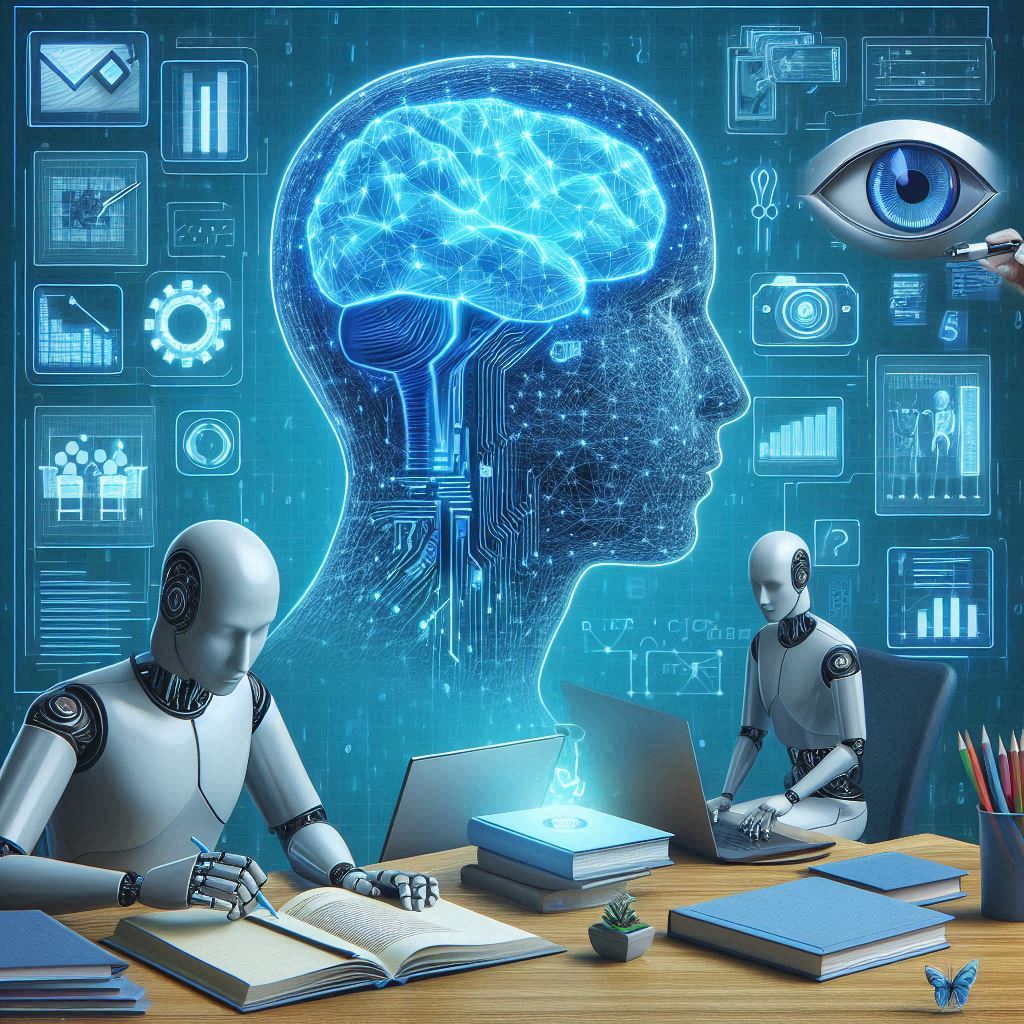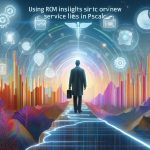In the digital age, accurate documentation is paramount across nearly every sector—healthcare, legal, education, research, customer service, and more. As the volume and complexity of data grow exponentially, the traditional means of documentation—manual transcription, note-taking, form filling, and data entry—have become both inefficient and error-prone. Natural Language Processing (NLP), a subfield of artificial intelligence (AI), is rapidly transforming how we create, analyze, and validate documentation. NLP enables machines to understand, interpret, and generate human language, leading to improved accuracy, efficiency, and consistency in documentation workflows.
This guide explores in depth how NLP is enhancing documentation accuracy. We delve into its applications, underlying technologies, real-world use cases, implementation challenges, and the future landscape across industries. By the end, readers will have a comprehensive understanding of how NLP is revolutionizing documentation processes and the transformative value it brings.
Understanding Natural Language Processing (NLP)
What Is NLP?
Natural Language Processing is a subdiscipline of AI that focuses on enabling computers to understand, interpret, and generate human language. It combines linguistics, computer science, and machine learning to enable interaction between humans and machines using natural language.
Core components include:
- Tokenization
- Part-of-Speech Tagging
- Named Entity Recognition
- Parsing
- Sentiment Analysis
- Text Summarization
- Machine Translation
- Speech Recognition
These elements allow NLP systems to break down complex human communication into structured, machine-readable formats.
Evolution of NLP
NLP has evolved significantly over the decades:
- 1950s–1980s: Rule-based systems and syntactic analysis dominated.
- 1990s–2000s: Statistical models (e.g., Hidden Markov Models) gained prominence.
- 2010s: Neural networks and deep learning revolutionized NLP (e.g., word2vec, GloVe).
- 2020s–Present: Transformers (e.g., BERT, GPT, T5) now dominate, providing contextual understanding at scale.
These advancements have made NLP robust enough for real-time document analysis, summarization, error detection, and more.
The Documentation Challenge
The Importance of Accurate Documentation
Accurate documentation is critical for:
- Compliance: Legal and regulatory adherence
- Record-Keeping: Historical accuracy
- Billing and Reimbursement: Especially in healthcare
- Knowledge Transfer: In education and training
- Decision-Making: Business intelligence and analytics
Errors can lead to lawsuits, data breaches, financial penalties, and reputational harm.
Common Documentation Issues
- Human Error: Typos, omissions, misinterpretations
- Ambiguity: Vague or unclear language
- Redundancy: Repetitive entries across documents
- Non-standardization: Inconsistent terminology or formatting
- Scalability: Difficulty managing large volumes of data
Manual documentation remains a bottleneck in many industries.
How NLP Enhances Documentation Accuracy
Automated Transcription and Dictation
NLP-driven speech-to-text systems transcribe spoken language into written format with increasing accuracy. Healthcare providers, legal professionals, and journalists now use NLP tools to generate notes from conversations and dictations.
Benefits:
- Reduces manual note-taking errors
- Speeds up documentation
- Increases completeness
Grammar and Syntax Correction
Advanced NLP tools (e.g., Grammarly, Microsoft Editor) correct grammar, syntax, punctuation, and sentence structure errors automatically. They also improve readability and tone.
Real-Time Assistance:
- Spell checking
- Sentence rephrasing
- Passive voice detection
Template Automation and Standardization
NLP can parse user inputs and auto-fill predefined templates. This is used in:
- Medical notes
- Legal contracts
- Academic reports
- Insurance claims
This ensures consistency and minimizes variability.
Semantic Analysis and Contextual Understanding
NLP models like BERT and GPT understand the context of sentences rather than just keywords. This helps detect:
- Inconsistencies
- Contradictions
- Irrelevant content
This semantic awareness boosts documentation accuracy in nuanced contexts.
Named Entity Recognition (NER)
NER identifies key information such as names, dates, medications, diagnoses, organizations, etc., and extracts them accurately. This enhances:
- Indexing
- Cross-referencing
- Metadata generation
Summarization and Abstraction
Abstractive summarization allows NLP tools to produce concise summaries of lengthy documents without losing essential meaning. This is especially useful in:
- Medical discharge notes
- Legal briefings
- Research literature reviews
NLP in Healthcare Documentation
Clinical Documentation Improvement (CDI)
NLP is transforming clinical documentation by:
- Identifying missing or ambiguous diagnoses
- Recommending appropriate ICD codes
- Flagging inconsistencies
This leads to improved reimbursement and compliance with CMS guidelines.
Electronic Health Records (EHRs)
NLP streamlines EHR workflows:
- Converts voice notes to structured EHR fields
- Highlights drug interactions
- Standardizes clinical terms
Example: Nuance Dragon Medical One integrates NLP with EHRs for real-time note generation.
Case Study: Radiology Reports
Radiologists use NLP-based templates to generate reports using voice dictation. The system identifies anatomical terms, compares prior images, and structures findings.
Impact:
- 45% reduction in report errors
- 30% faster turnaround times
Mental Health Documentation
NLP models analyze therapy transcripts, detect sentiment, and highlight risk indicators (e.g., suicidal ideation). This ensures:
- More accurate records
- Early intervention
- Better care continuity
NLP in Legal Documentation
Legal Drafting and Review
NLP tools review contracts for:
- Legal jargon
- Clause completeness
- Risk terms
- Compliance alignment
They also auto-suggest boilerplate content and flag inconsistencies.
E-Discovery and Summarization
During litigation, NLP systems scan thousands of pages for:
- Emails
- Depositions
- Court rulings
They extract relevant sections and provide summaries—reducing review times significantly.
Case Management Systems
Law firms use NLP to:
- Auto-generate case notes
- Identify precedent cases
- Draft initial legal briefs
Tools like ROSS Intelligence and LexisNexis utilize NLP to improve research accuracy.
NLP in Business and Customer Service
Customer Support Documentation
NLP chatbots and helpdesk systems log interactions, classify issues, and auto-summarize customer queries.
Advantages:
- Reduces agent workload
- Enhances support documentation accuracy
- Improves case routing
Compliance Documentation
Financial institutions use NLP to generate compliance reports from transaction data. NLP helps:
- Detect suspicious terms
- Identify regulatory violations
- Maintain audit logs
Business Intelligence Reports
NLP summarizes dashboards and analytics into plain language. Executives receive automated insights without reading spreadsheets or dashboards.
Example: Salesforce’s Einstein GPT can generate narrative summaries from CRM data.
NLP in Education and Academia
Automated Essay Scoring
NLP systems assess grammar, content relevance, structure, and argumentation quality. Used by:
- Educational Testing Service (ETS)
- Pearson
Reduces bias and increases grading consistency.
Academic Writing Tools
Students use NLP-based writing assistants to:
- Detect plagiarism
- Enhance tone
- Improve clarity
- Reference properly
These tools enhance the accuracy of academic submissions.
Research Documentation
NLP tools like Semantic Scholar or Iris.ai help extract key findings, summarize long articles, and index references.
NLP in Scientific and Technical Documentation
Structured Data Extraction
NLP mines scientific papers for:
- Methodologies
- Results
- Equations
- Citations
This is essential for meta-analyses and technical reviews.
Error Detection in Technical Reports
In engineering, NLP identifies:
- Unit mismatches
- Incorrect formulas
- Incomplete procedural steps
This increases the precision and usability of technical documentation.
NLP for Multilingual Documentation Accuracy
Translation and Localization
Advanced NLP systems (like DeepL or Google Translate with transformer-based models) provide high-fidelity translations, considering tone, culture, and idioms.
Cross-Language Information Retrieval
Multilingual NLP allows users to search documentation in one language and retrieve relevant content from another.
Trans-creation for Marketing Docs
In marketing, NLP supports “transcreation”—adapting messages while preserving emotional impact and context.
Implementation and Integration Strategies
Choosing the Right NLP Tools
Criteria include:
- Accuracy (BLEU, F1, ROUGE scores)
- Domain specialization (health, legal, etc.)
- Integration APIs
- Customizability
Examples: Amazon Comprehend, Azure Text Analytics, spaCy, HuggingFace Transformers
Human-in-the-Loop (HITL) Systems
HITL allows humans to validate and improve NLP output, ensuring:
- Fewer errors
- Continuous model improvement
- Transparency
Training Domain-Specific Models
Fine-tuning models on industry-specific corpora boosts accuracy. For example, training on radiology notes yields better NLP for that domain.
Challenges and Limitations
Ambiguity in Language
Natural language is inherently ambiguous. NLP may misinterpret:
- Sarcasm
- Context
- Slang
Data Privacy and Compliance
Handling sensitive documentation (e.g., PHI in healthcare) requires HIPAA/GDPR compliance.
Model Bias
If training data contains biases, NLP output may be discriminatory or inaccurate.
Dependency on Data Quality
Garbage in, garbage out. Poor documentation inputs reduce NLP accuracy.
Measuring NLP Documentation Accuracy
Accuracy Metrics
- BLEU: Translation accuracy
- ROUGE: Summarization quality
- WER/CER: Speech recognition errors
- F1 Score: Named entity precision/recall
Human Evaluation
End-users assess the clarity, completeness, and usefulness of NLP-generated documentation.
Future of NLP in Documentation
Large Language Models (LLMs)
LLMs like GPT-5 and Claude are enabling:
- Real-time document generation
- Summarization of 1000+ page datasets
- Conversational documentation interfaces
Autonomous Agents
NLP-driven agents can:
- Conduct interviews
- Document findings
- Verify facts
Explainable NLP
Efforts are underway to make NLP models explainable, ensuring users understand how outputs are generated.
Conclusion
NLP is no longer a futuristic concept—it is actively redefining how documentation is created, maintained, and analyzed. By automating repetitive tasks, reducing human error, and bringing consistency across domains, NLP significantly enhances documentation accuracy. Whether it’s healthcare, law, customer service, education, or research, the integration of NLP is fostering a smarter, faster, and more precise documentation ecosystem.
However, responsible implementation—coupled with ethical oversight, domain-specific training, and a human-in-the-loop approach—is essential for realizing its full potential. As NLP models grow more sophisticated and accessible, organizations that harness this technology will lead the way in operational excellence and trustworthiness.
SOURCES
Brown, T. B., et al. (2020). Language models are few-shot learners. Advances in Neural Information Processing Systems, 33, 1877–1901.
Devlin, J., Chang, M. W., Lee, K., & Toutanova, K. (2019). BERT: Pre-training of deep bidirectional transformers for language understanding. Proceedings of the 2019 Conference of the North American Chapter of the Association for Computational Linguistics: Human Language Technologies, 4171–4186.
Rajkomar, A., et al. (2018). Scalable and accurate deep learning with electronic health records. npj Digital Medicine, 1(18), 1–10.
Jiang, M., et al. (2011). A study of machine-learning-based approaches to extract clinical entities and their assertions from discharge summaries. Journal of the American Medical Informatics Association, 18(5), 601–606.
Topaz, M., Murga, L., Gaddis, K. M., McDonald, M. V., Bar-Bachar, O., Goldberg, Y., & Bowles, K. H. (2016). Mining fall-related information in clinical notes: Comparison of rule-based and novel NLP approaches. Journal of Biomedical Informatics, 60, 356–362.
Chung, J., Cho, K., & Bengio, Y. (2014). Empirical evaluation of gated recurrent neural networks on sequence modeling. arXiv preprint arXiv:1412.3555.
Krittanawong, C., Johnson, K. W., Rosenson, R. S., Wang, Z., Aydar, M., & Kitai, T. (2020). Deep learning for cardiovascular medicine: A practical primer. European Heart Journal, 41(18), 1788–1799.
Chen, M., Hao, Y., Cai, Y., Wang, Y., & Zhang, L. (2017). A survey of the applications of artificial intelligence in healthcare. Journal of Biomedical Research, 31(6), 511–516.
Chiu, B., Crichton, G., Korhonen, A., & Pyysalo, S. (2016). How to train good word embeddings for biomedical NLP. Proceedings of the 15th Workshop on Biomedical Natural Language Processing, 166–174.
Liu, P., Yuan, W., Fu, J., Jiang, Z., Hayashi, H., & Neubig, G. (2023). Pre-train, prompt, and predict: A systematic survey of prompting methods in natural language processing. ACM Computing Surveys (CSUR), 55(9), 1–35.
Wang, Y., Wang, L., Rastegar-Mojarad, M., Liu, S., Shen, F., Liu, H., & Afzal, N. (2018). Clinical information extraction applications: A literature review. Journal of Biomedical Informatics, 77, 34–49.
Peters, M. E., et al. (2018). Deep contextualized word representations. Proceedings of NAACL-HLT, 2227–2237.
Vaswani, A., et al. (2017). Attention is all you need. Advances in Neural Information Processing Systems, 30, 5998–6008.
Alsentzer, E., Murphy, J. R., Boag, W., Weng, W. H., Jin, D., Naumann, T., & McDermott, M. (2019). Publicly available clinical BERT embeddings. Proceedings of the 2nd Clinical Natural Language Processing Workshop, 72–78.
Yim, W. W., Yetisgen, M., Harris, W. P., & Kwan, S. W. (2016). Natural language processing in oncology: A review. JAMA Oncology, 2(6), 797–804.
Chamberlain, J. A., Poesio, M., & Kruschwitz, U. (2017). A data-driven approach to measuring the informativeness of sentences. Journal of the Association for Information Science and Technology, 68(6), 1393–1406.
Demner-Fushman, D., Chapman, W. W., & McDonald, C. J. (2009). What can natural language processing do for clinical decision support? Journal of Biomedical Informatics, 42(5), 760–772.
Bird, S., Klein, E., & Loper, E. (2009). Natural language processing with Python: Analyzing text with the natural language toolkit. O’Reilly Media, Inc.
Jurafsky, D., & Martin, J. H. (2023). Speech and language processing (3rd ed.). Pearson.
Kumar, A., & Rajan, S. (2022). Legal document automation using NLP: Tools and frameworks. Artificial Intelligence and Law, 30(1), 25–49.
HISTORY
Current Version
July 26, 2025
Written By:
SUMMIYAH MAHMOOD








Leave a Reply